INSTALLATION, OBSERVATIONS, ( OVER ) ANALYSIS
Everybody knows that appearance-wise, one sailor’s dream yacht is another’s blot on the seascape and that we all have our own personal priorities. My professional interest centres on the after end (where else can a Windpilot go?). Like some Don Quixote of the pontoons, I have been impudently annexing the prime spot in the middle of the transom for decades. Sometimes it takes all my cunning and reason (not to mention a measure of courage on occasion) to bring people accustomed to knowing their stuff and having their way (including the odd know-it-all) round to my way of thinking. It can be a painful process (painful, that is, for people who haven’t spent a large part of their life wrestling with the issues involved).
I have become used to sharing my opinion in direct fashion. Politeness has its place no doubt, but the risk of being misunderstood or brushed aside is just too high. I would keep my opinion to myself if I didn’t think I could back it up, but with the weight of evidence on my side and a receptive audience I find the effort is well worthwhile. I run into some, of course, who know it all already, but of what possible interest could my blog be to someone who knows they know everything already?
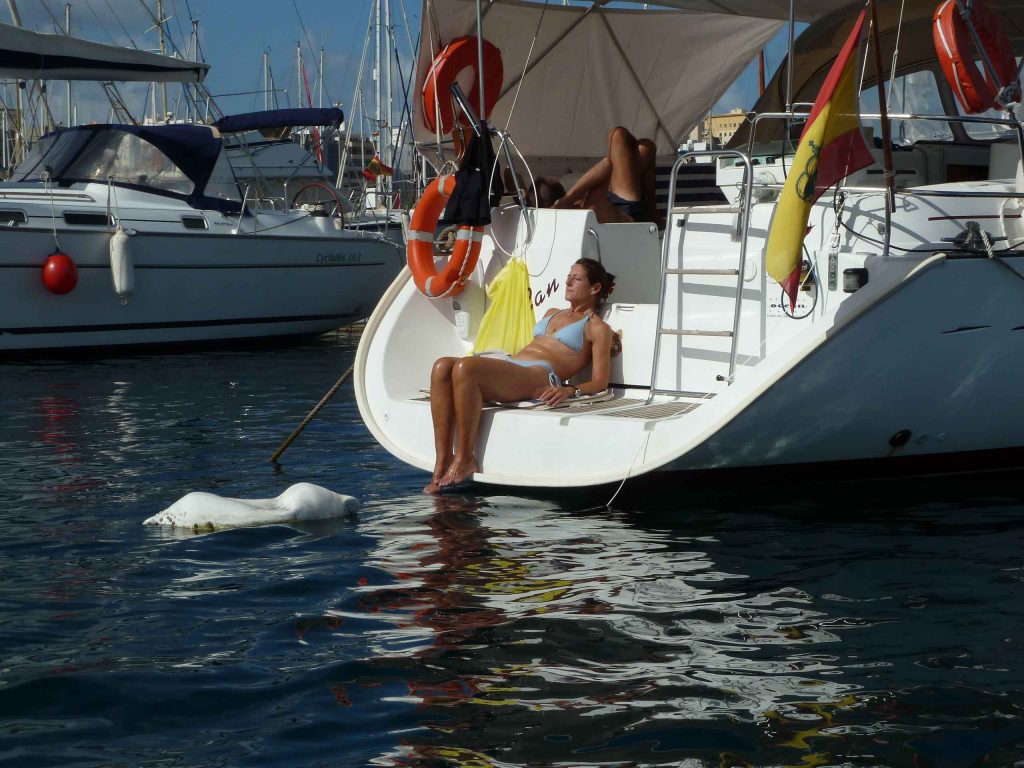
Antenna arch, antennas, wind generator/hydro generator/solar panel(s), dinghy, davits, outboard, bathing platform, radar mast, bimini … oh and one of those windvane steering things: that’s the sailor’s basic wish list when it starts to get serious and thoughts turn increasingly to distant waters, sunshine and anchoring off the palm-fringed beach.
Balancing the natural desire for cold beer, decent food and a bit of shade for delicate Northern skin with essential safety considerations and the need to maintain at least a certain level of creature comforts for any less hardened members of the crew without overly compromising the aesthetics of the pride and joy can be a tall order – often too tall even for the bluewater specialist yards.
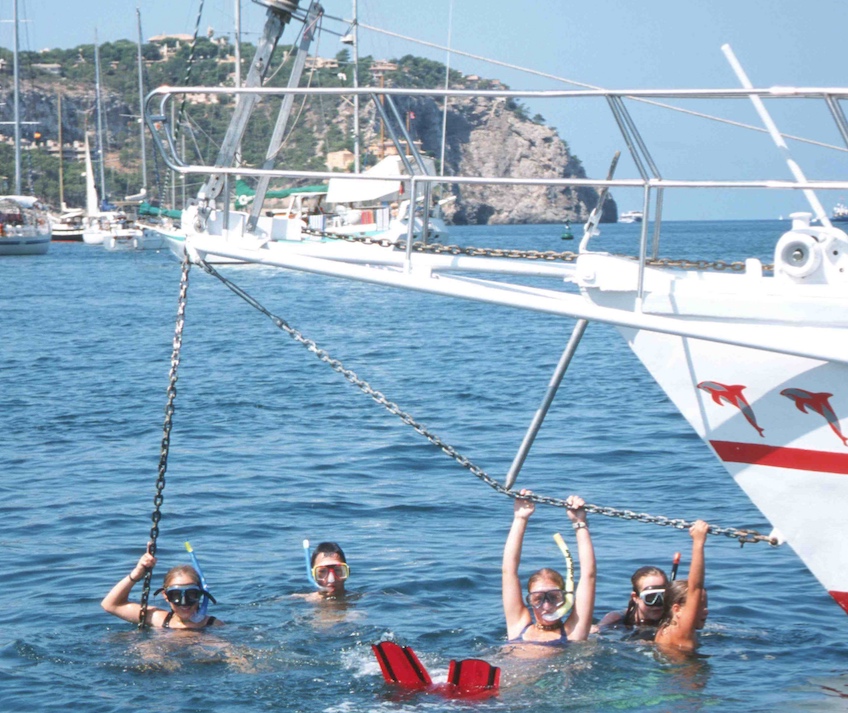
The job of deciding what to take and where to fit it ultimately falls to the skipper (that is to say the person who wields the real power, which may not necessarily be the “official” skipper). Naturally decisions with significant financial as well as technical consequences often go to committee, at which point considerations other than direct performance at sea may have an impact…
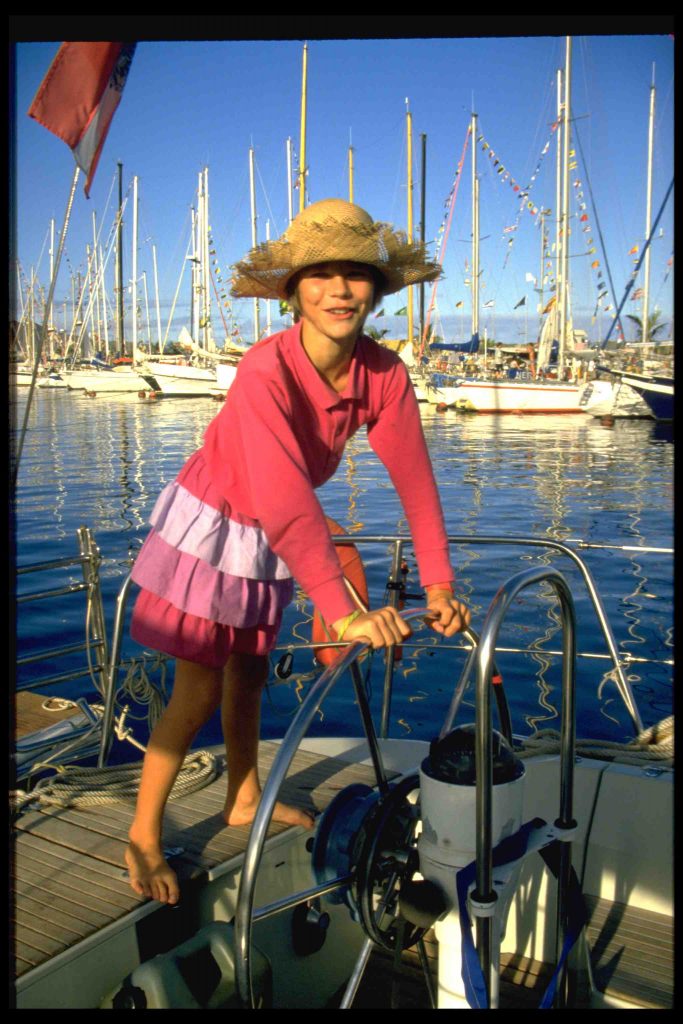
Whoever ends up with the final decision faces the challenge of ascertaining, ordering and reconciling the great mass of conflicting requirements, requests and interests to produce a vessel suitable for global travel that works flawlessly at sea without intolerably offending the users’ taste. Producing a boat that manages to do all of this and still look good even without the proprietor’s rose-tinted spectacles represents an achievement worthy of real respect. Get it wrong, either due to a failure to think things through properly or a simple lack of knowledge, and the results can be inelegant to say the least. Done badly even a new build can press all the wrong visual buttons.
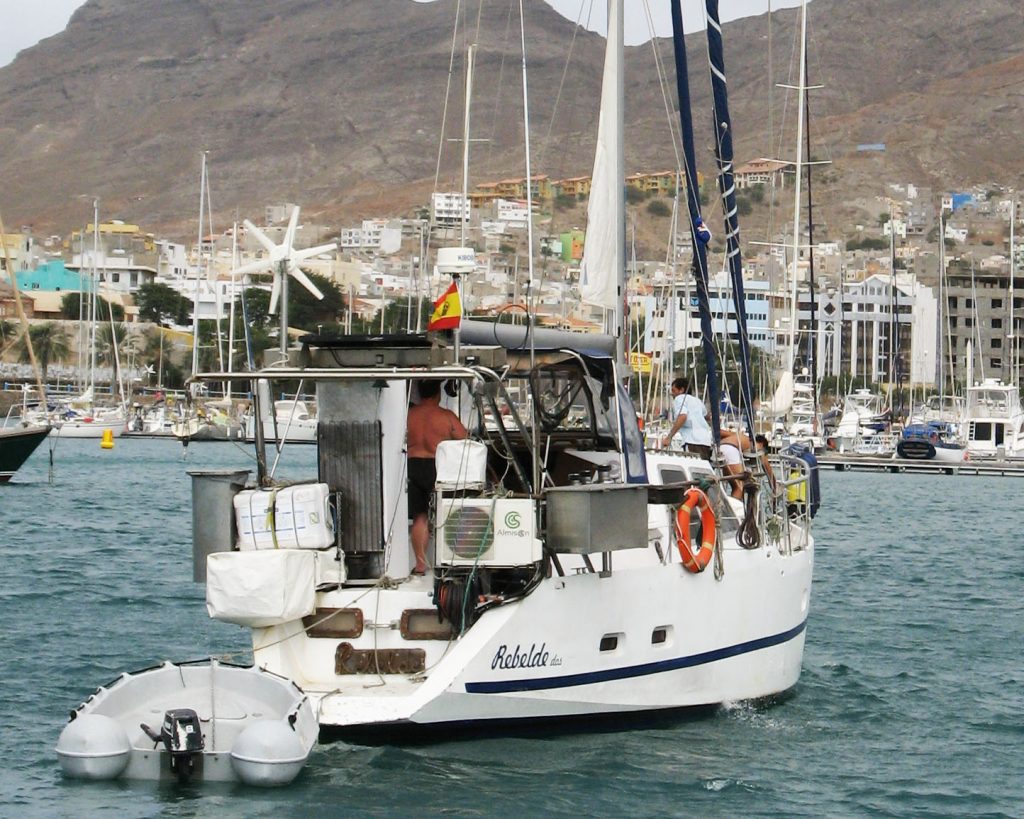
Compromises cry out from every angle and yet … and yet there is another way (another way apart from the financial torture of a one-off built to order): it pays to ponder the details and be intellectually rigorous in the search for effective solutions.
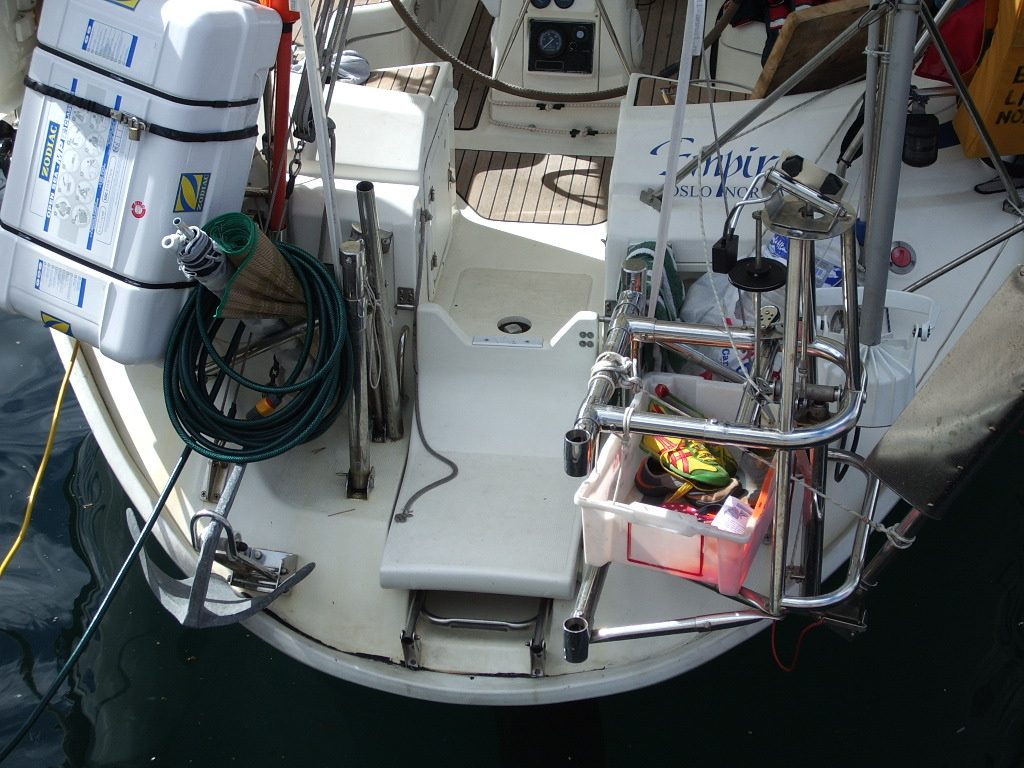
Could have should have would have… I spend a good part of my life on marking out the boundary between the worthwhile and the pointless and on ordering and reconciling priorities, mainly to ensure (insofar as it falls within my power) that the boat of the moment does not spark too sharp an intake of breath when a well-meaning but still critical gaze falls upon the hind quarters and the army of afterthoughts there to be found. I should add – and this is hardly controversial – that this area can prove treacherous territory for human hind quarters too, from trousers terminally torn on merciless deck fittings to the silent demise of a fragile little antenna annihilated under the impact of an ample and unsuspecting rear end.
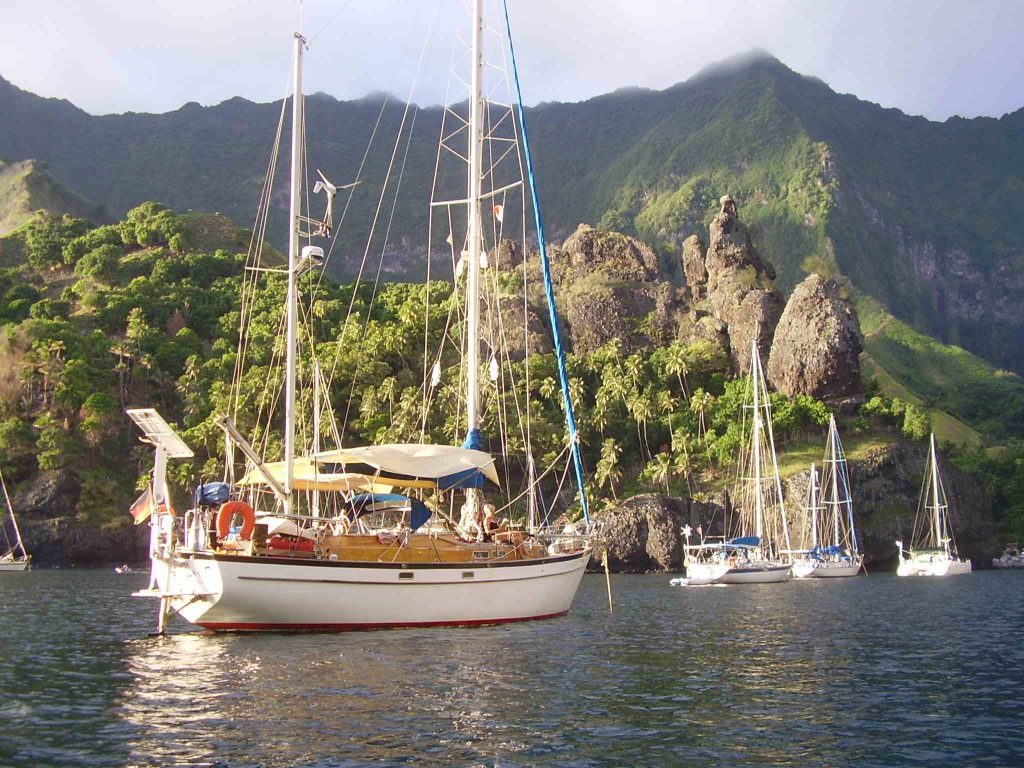
SV Budlup in den Marquesas
The world’s bluewater library offers countless books identifying, describing and underlining the important features of different bits of kit and while this may, perhaps, help readers to avoid errors in their decision-making, there is to my mind a distinct lack of more detailed practical advice and suggestions as to how these different systems are to be installed and operated together in the same small space on a real boat on the real sea.
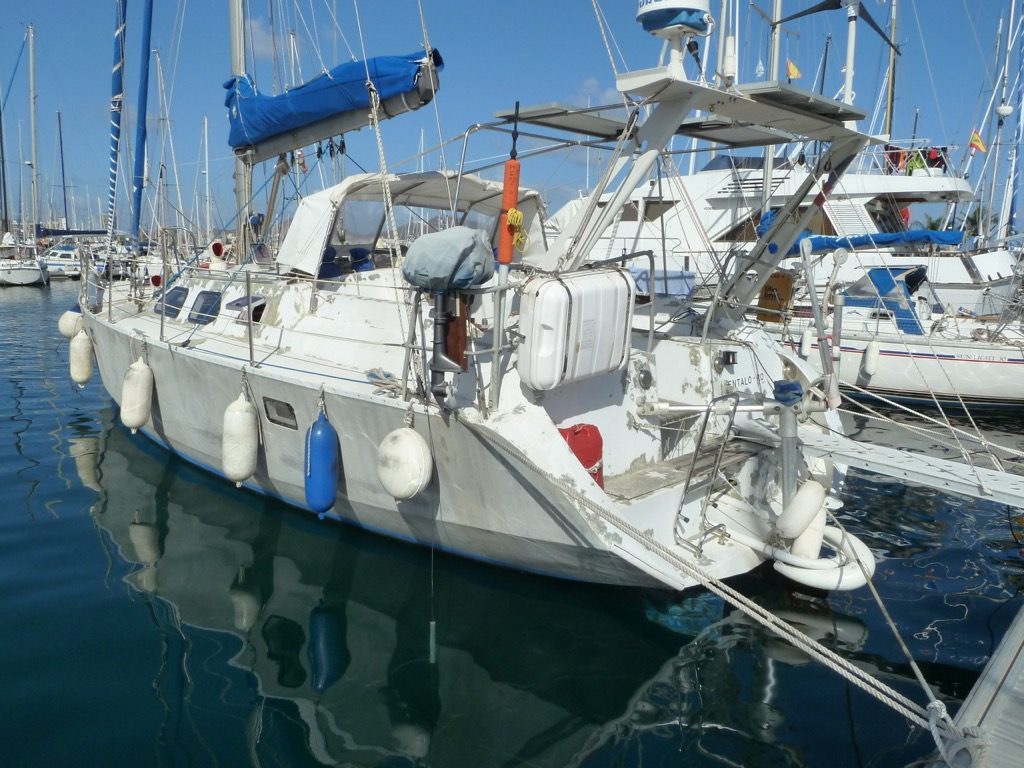
It must surely be inevitable that leaving the stern of a new build to the uncoordinated attentions of a succession of fitters, each concerned only with installing one specific item of equipment, will seldom result in visual harmony. It seems to me that we lose all objectivity when looking at our own boat (although mine have always been genuinely beautiful) and that not all of us have an interest in learning the error of our ways either.
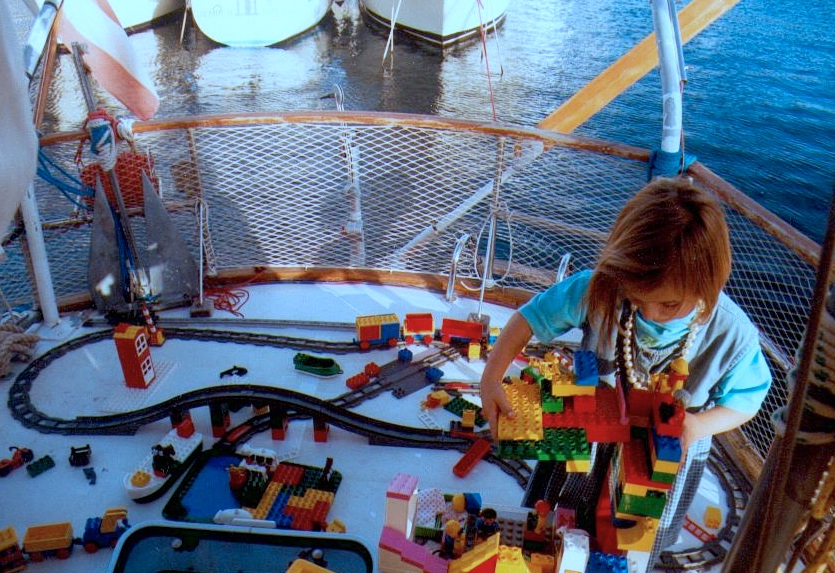
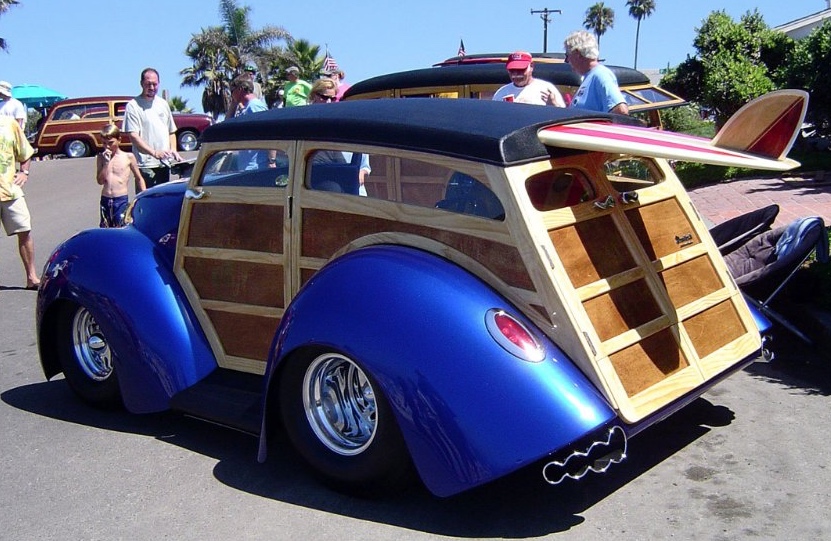
What would cars look like if we treated them the same way we treat boats? Picture a dashboard crowded with retrofitted instruments randomly screwed, taped or clamped to every bit of available surface. Would anyone tolerate that? When it comes to boats, on the other hand, many people seem quite prepared to forget about looks altogether or to assume – mistakenly I might suggest – that a yacht’s effectiveness as a status symbol inevitably increases with every new gadget on display.
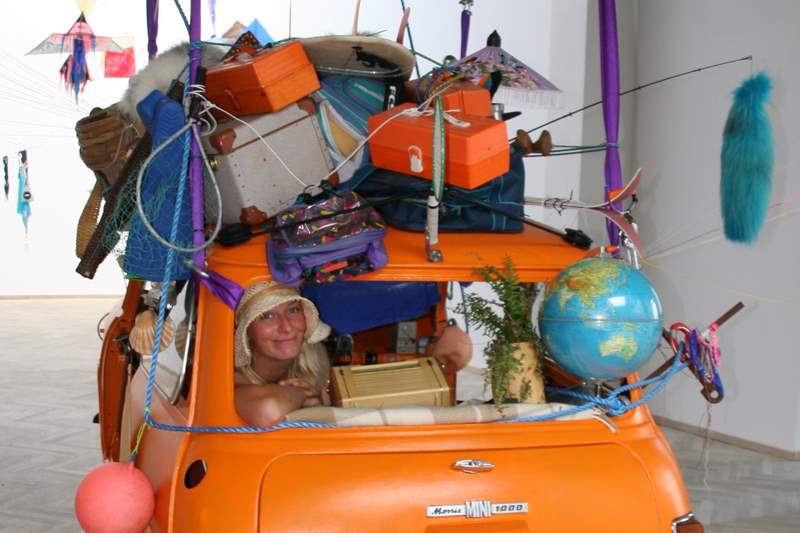
Rewind 40 years and a Windpilot at the stern and baggywrinkle in the standing rigging would have been quite enough to identify a bluewater veteran. Today’s prospective long-distance explorers, in contrast, have an almost endless list of accessories available to them. Which is handy in one way: the imponderables of existence prevent many sailors taking the final step to realise their dreams, but so long as the boat is still there sporting its many appendages with intent, they can continue to insist that departure is merely postponed and not cancelled. “Other things being equal we could leave tomorrow, but we just need to sort out X, Y and Z first. Hopefully it won’t be long now…” And all the while, with each delay leading to another round of planning and procurement, the owner gets to bask in the reflected glory of a yacht that is visibly highly equipped for the challenges of the cruel sea to come. Or am I oversimplifying things? Surely not…

A carefully planned layout has advantages afloat and ashore
Is there simply not enough demand in the market for smart solutions? Do sailors just not think about this aspect? Or is there a general lack of awareness that – and of how – things could be different? I find it astonishing that prospective bluewater sailors are so often left to their own devices in this area. My aim in pulling out the keyboard this time is to share more widely my thoughts and suggestions about how best to accommodate the necessary equipment. Encouraging everyone to give a bit more thought to this issue might even make some of my future face-to-face discussions a bit more straightforward too – I live in hope!
TIME AT THE BACK
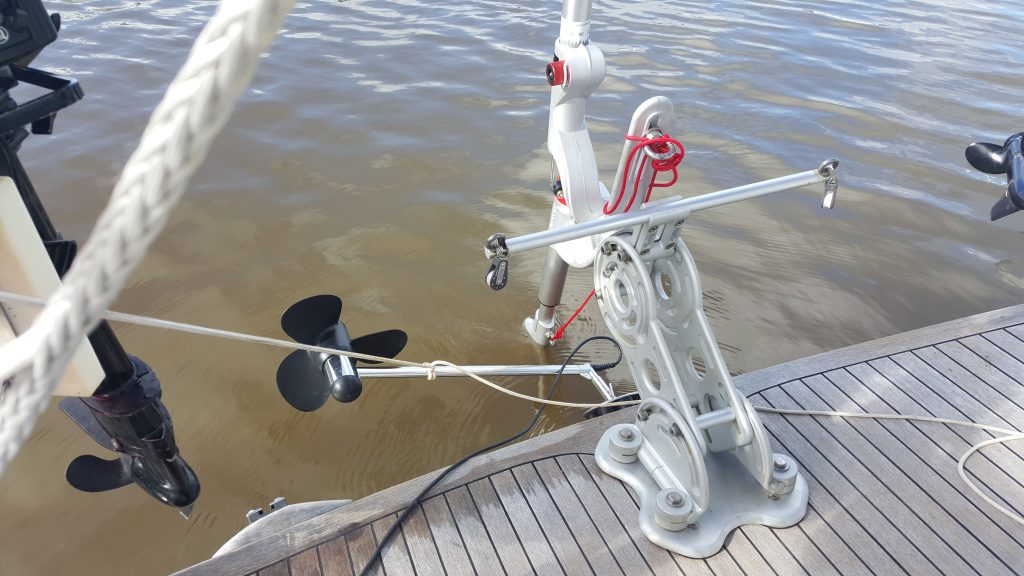
Speaking with manufacturers and boatyards that welcome suggestions and are prepared to give consideration to and implement ideas and improvements from outside is always a pleasure (and that pleasure is its own reward: I share my input on these matters as an idealist interested in the good of bluewater sailing and not in pursuit of personal financial gain). A little cooperation can go a long way: see, for example, my post about working with ARMIN HORN.
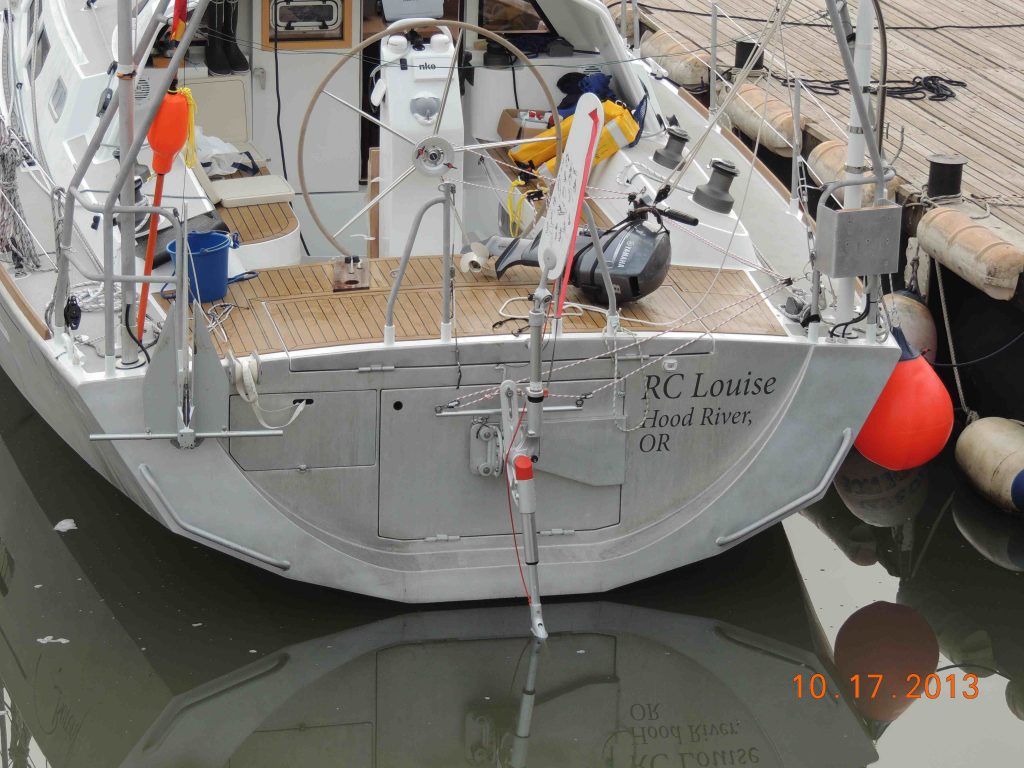
Boreal 44 with bathing platform and a Windpilot mounted on a pivoting bracket
French yards too are always keen to hear the details about possible ways to improve layouts at the stern, although it has to be said the French aluminium specialists are particularly innovative anyway when it comes to ingenious solutions (and they do good business too – what a coincidence!).
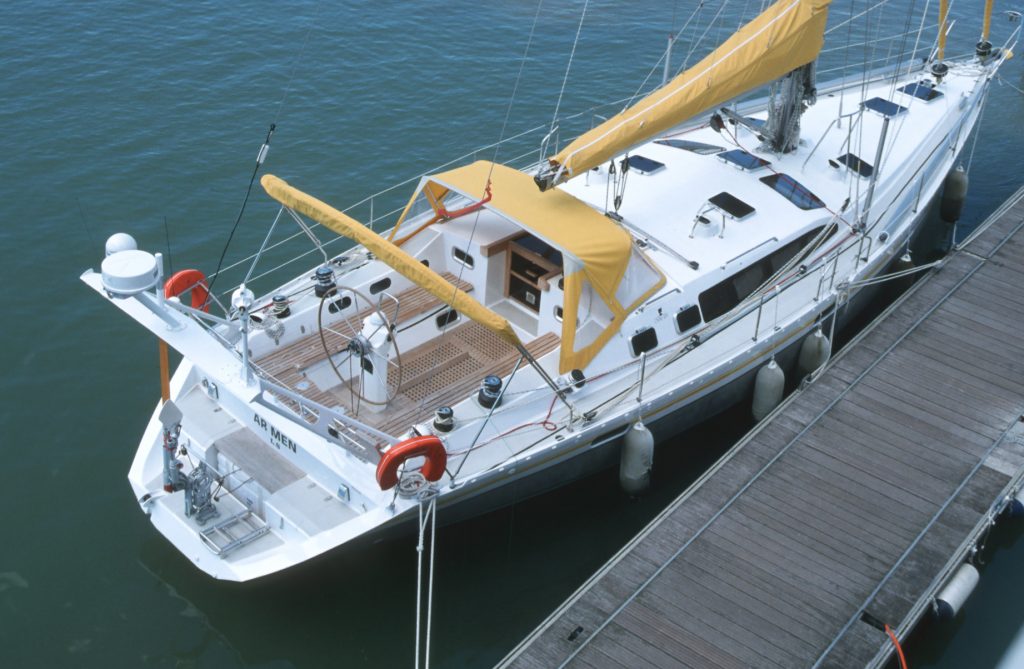
A fully equipped OVNI 455
Compared to the levels of refinement to be had with French aluminium bluewater yachts, many of the major international boatbuilders are still living in the dark ages. Admittedly the two target quite different segments of the market and it is no accident that many GRP boats find themselves subjected to unconventional add-ons that do nothing positive for their visual appeal.
MATERIALS
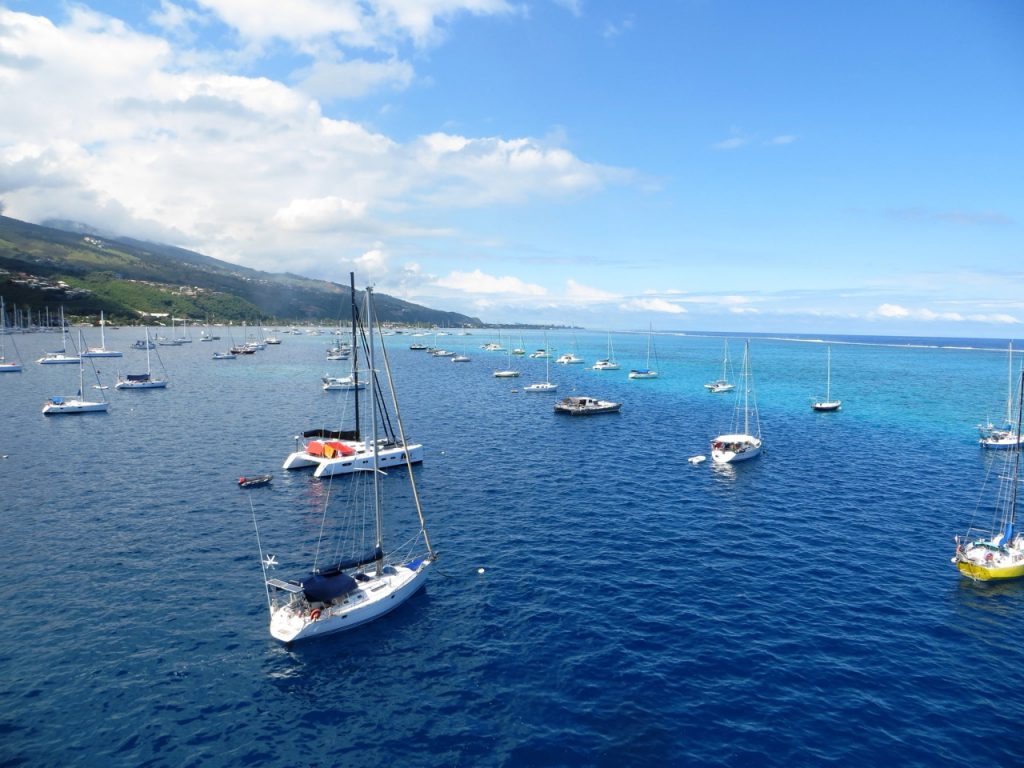
The very first point to consider when installing accessories is the local strength of the substrate, which gives metal hulls an instant advantage over composite constructions in terms of the options for finding a solid base for antenna arch, davits and stern rail. The (all too common) sight of insufficiently robustly mounted equipment precariously perched around the place always makes me feel queasy.
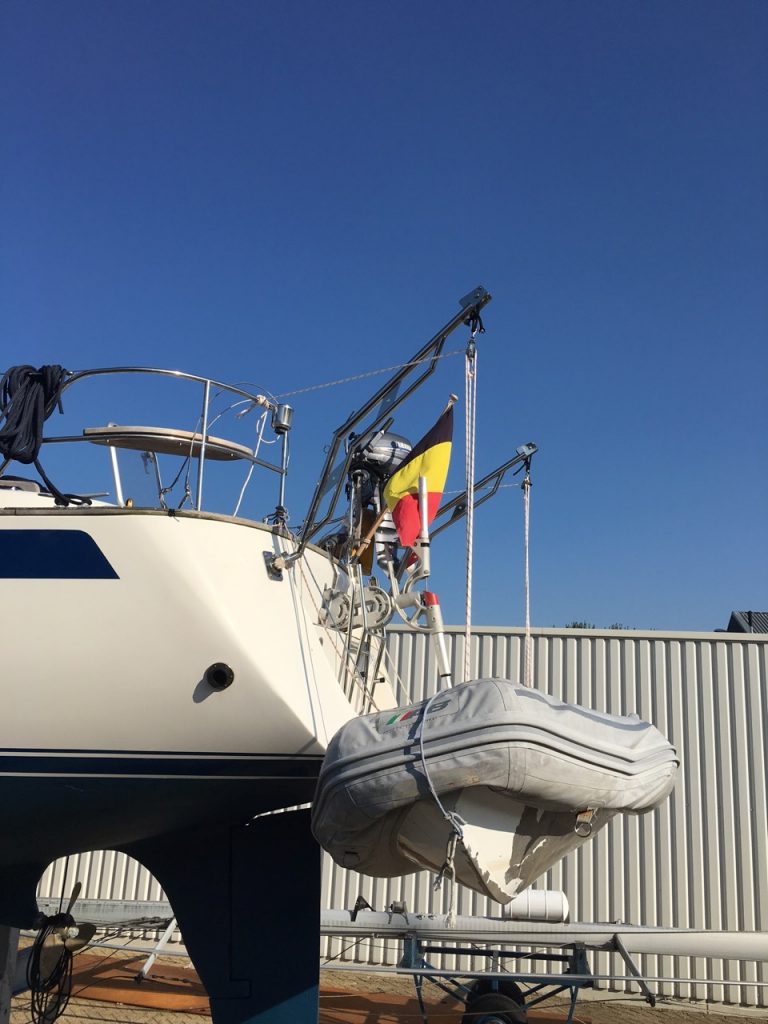
Davits just bolted into the transom laminate
Pole-mounted radar sets and wind generators often experience significant vibration and, when bolted to a GRP deck, can work loose or even break away entirely at sea. A radome riding three metres above deck height can develop considerable inertia on a boat bouncing around in rough seas and it doesn’t take a physicist to work out how this could end if the pole is not anchored firmly enough or if the loads involved are insufficiently well distributed. Arrangements in which the pole relies on wire or tube supports that only cover two dimensions allow the development of dynamic forces that can pose a severe test for any mounting.
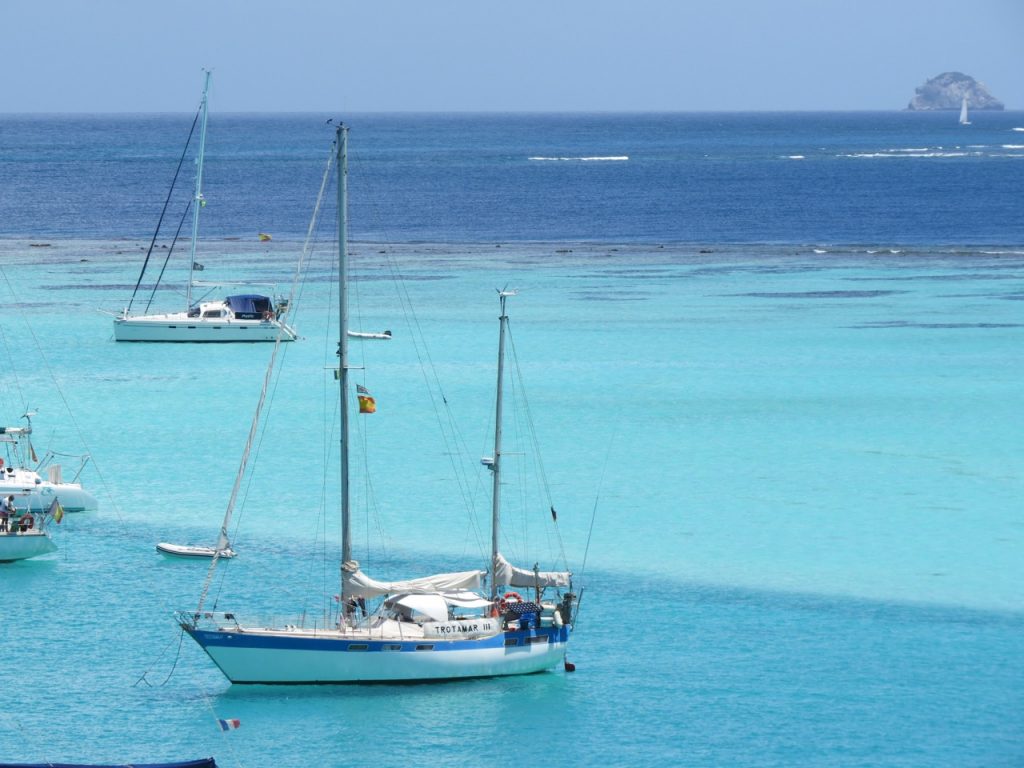
Far too many stern rails are attached to the deck with undersized fastenings, some are not even through-bolted and some lack the necessary reinforcement/backing in the relevant areas of the deck. Using a rail that is itself inadequately mounted to accommodate equipment such as a life raft, for example, tees up a sequence of events that could prove catastrophic. No less dubious are davit mountings that concentrate too much load in too small an area, especially if the corresponding section of hull/deck is not reinforced for such purposes.
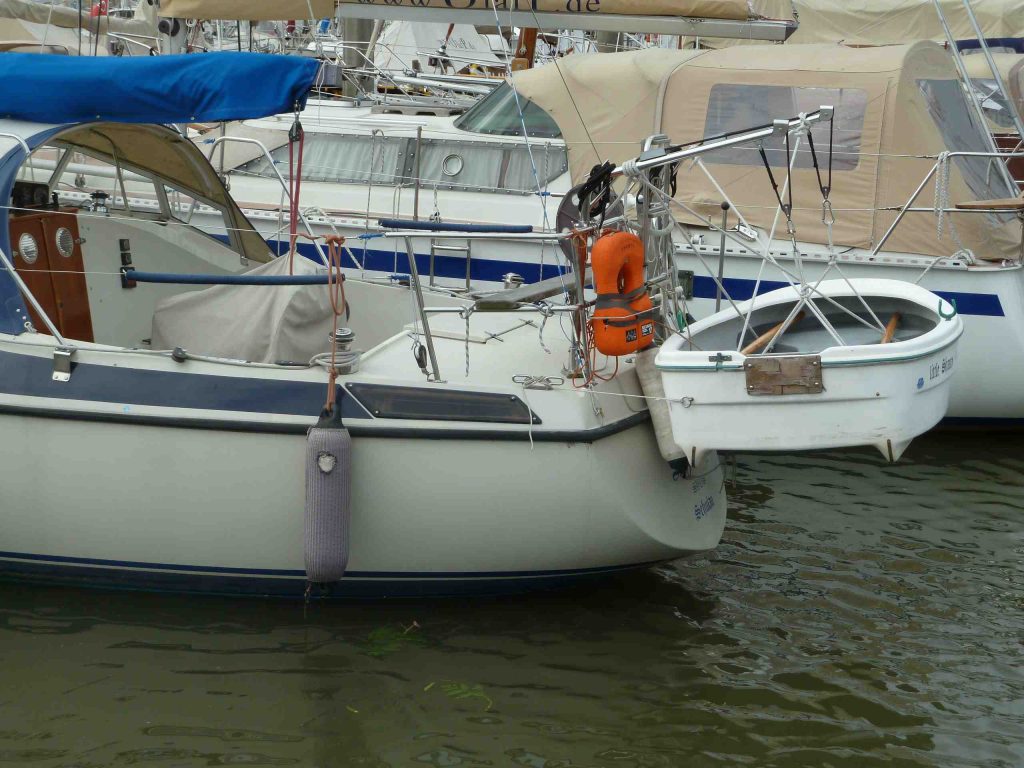
I believe great care should be taken to ensure firm and robust mounting when adding heavily loaded components like davits, antenna arch and life raft to a GRP hull. All too often I see solutions that fail to do the job justice because the potential forces involved have been underestimated – or simply forgotten.
SWIM LADDERS
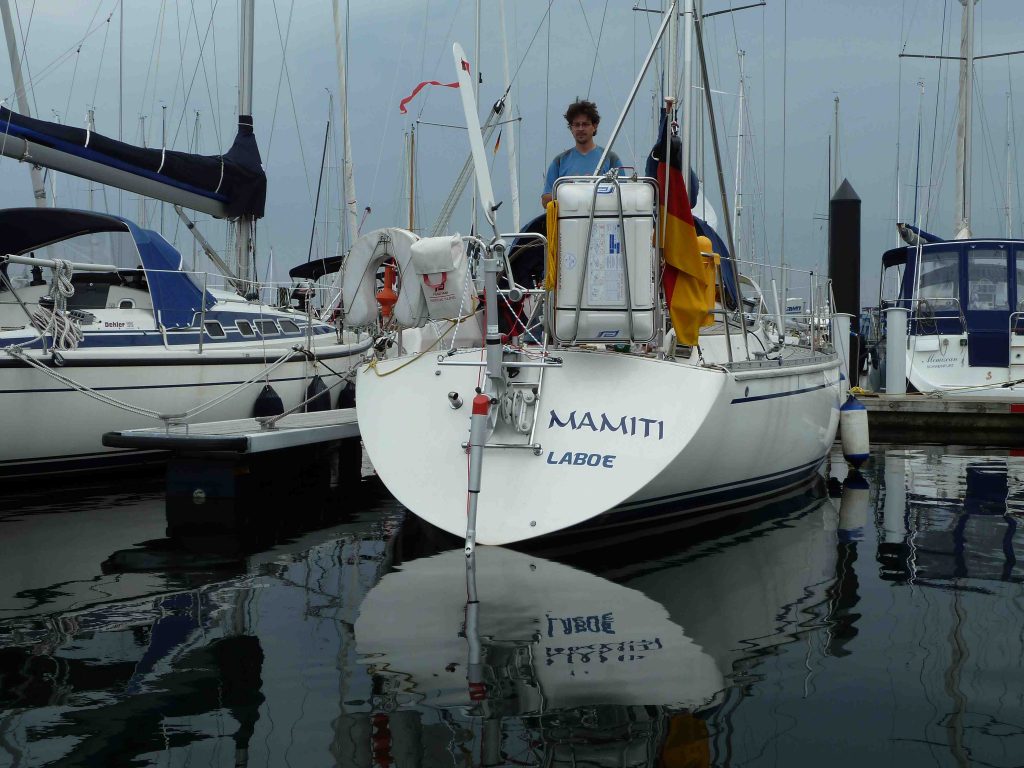
The first signs of disquiet usually begin to creep across the owner’s face with the news that that centrally mounted swim ladder is going to have to make way for the Windpilot (the few exceptions serving only to prove the rule). No sooner has this mental hurdle been overcome (with my generous assistance) than a second shock arrives: a ladder is never used in anything of a sea in any case and especially not for recovering an MOB, as the bouncing stern of a boat in waves offers no safe refuge for a person in the water and legs and feet need to be kept well away from the prop.
An MOB should always, always, be recovered over the side. There are all kinds of solutions available including the pilot ladders that have been mandatory under Cat. C for our French neighbours for years, for example. Mention such things in Germany and the response tends to be a blank look – it seems our sailing press has only just begun to talk about pilot ladders for emergency use.
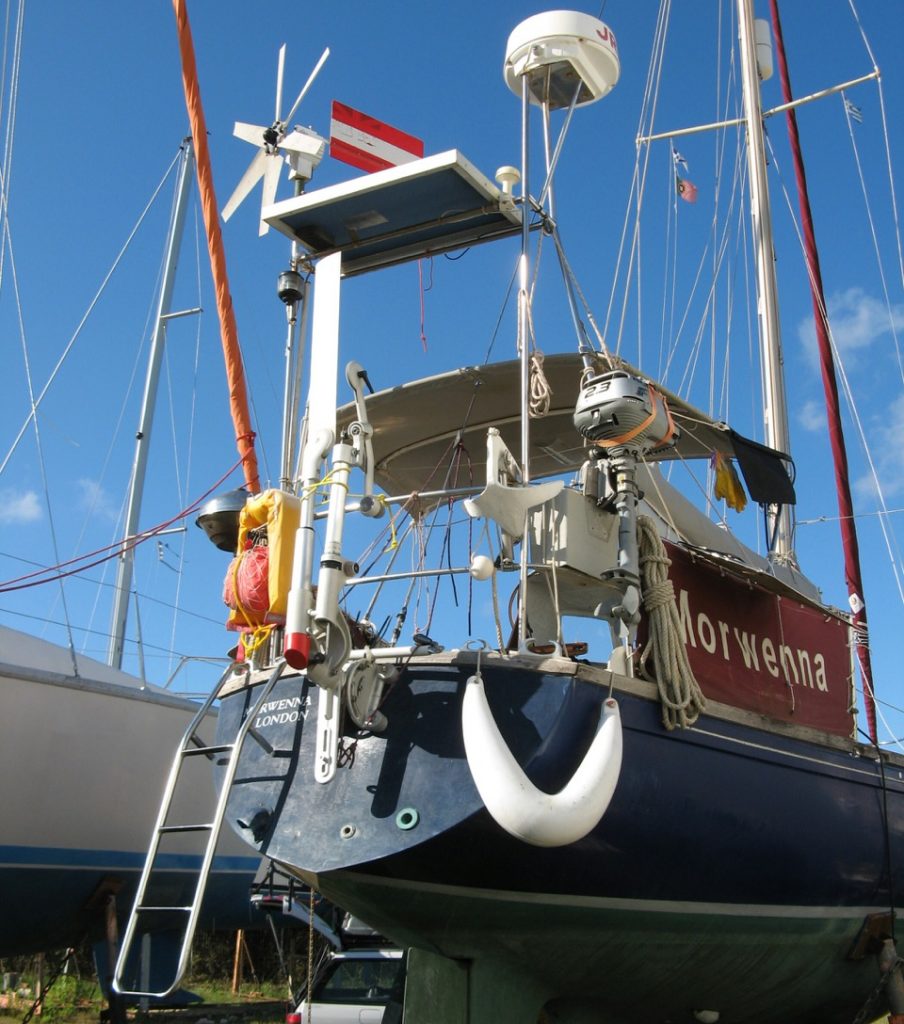
Once we accept that swim ladders are not safety-critical, the all-important question of how to combine one with a windvane steering system is easily and elegantly resolved: swim ladders are almost always attached with just two bolts, so a few moments with a wrench is all it takes to remove the ladder ready for passage-making, where the vane gear is king, and put it back again afterwards. If only it were always so simple!
The discussion about mounting windvane steering systems off-centre is one I expect to follow me to the grave, but I am happy to dive back in again should anyone feel the need. Just e-mail me.
GANGWAY
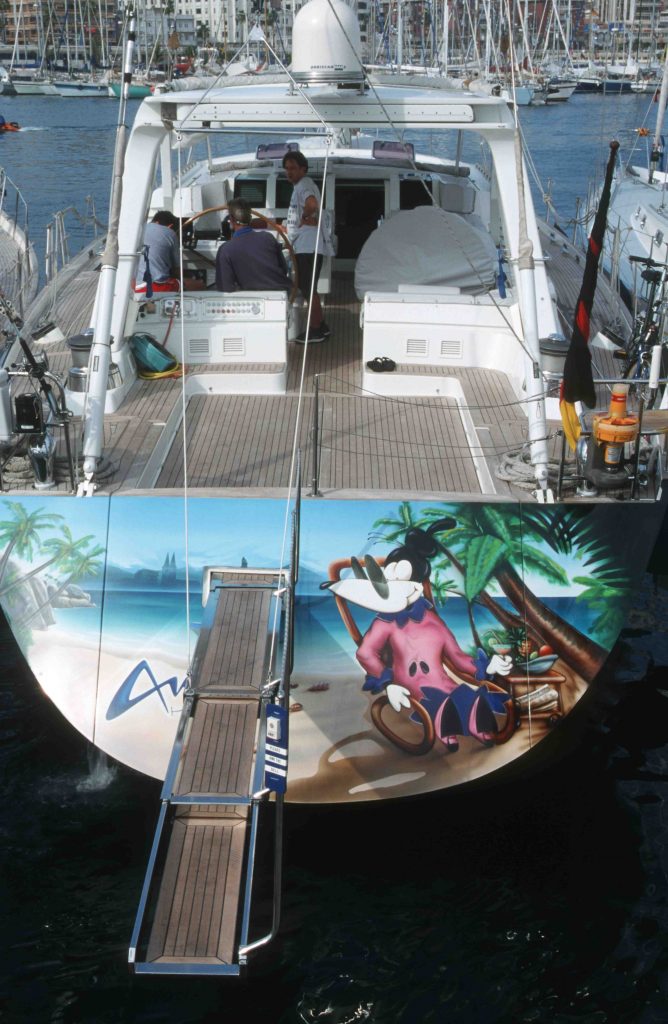
Essential in the Med, where reverse parking counts as state of the art, the gangway (or plank) is more or less obsolete beyond Gibraltar (but don’t forget the pontoons in Las Palmas).
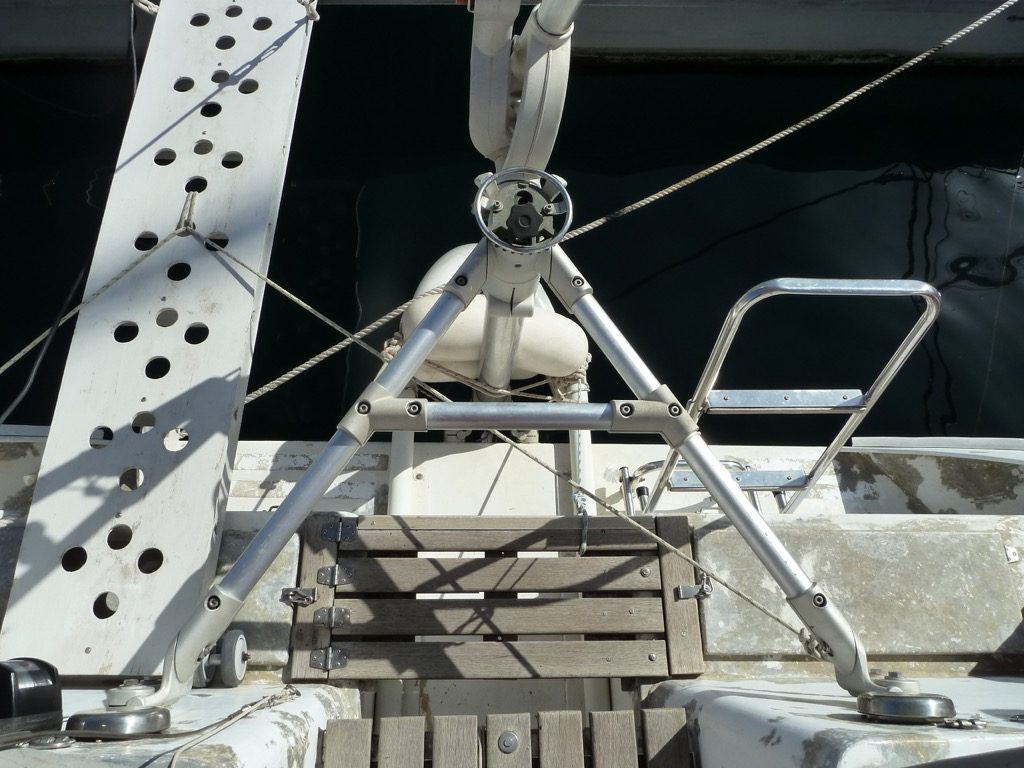
Generally speaking, the less sophisticated the catwalk, the more widely it can be used. A plain three-metre plank takes some beating in this regard, as it can also be called into action as a fender board should it ever be necessary to tie up alongside a concrete or sheet-piled harbour wall. Monsieur Henri Amel did his admirers – especially his customers (and indeed himself, given that he was blind for a large part of his career) – a great favour by inventing a ladder/gangway integrated into the stern rail that can be used anywhere. This solution can be emulated on other boats too with a little investment (see, for example, Sybille and Christian Uehr’sLINK
BATHING PLATFORM
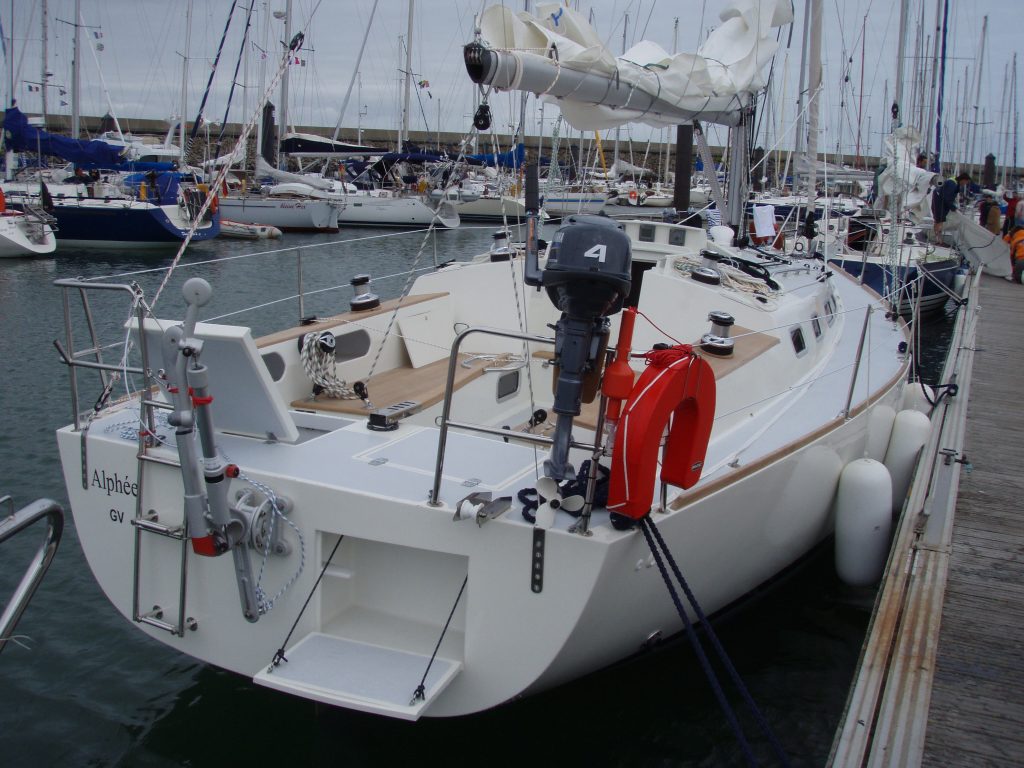
A Forna 37 with Windpilot, bathing platform and swim ladder
An open or fold-out bathing platform is one of the characteristic features of modern yachts. These platforms have all kinds of uses and make a worthwhile addition (permanent or folding) to traditional designs. A retrofitted platform should sit about 40 to 50 cm above the waterline. It is important that the platform end at least 25 cm or so from the edge of the transom, as otherwise it may drag in the water when sailing fast and heeled.
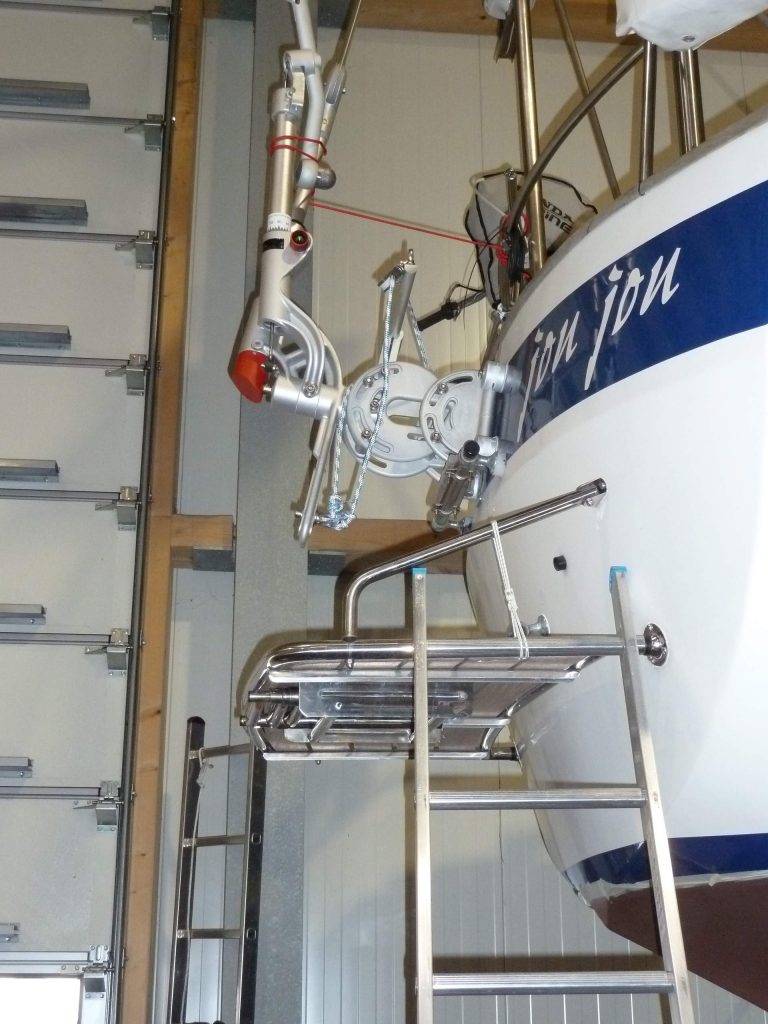
An HR 382 with Windpilot, platform and integral swim ladder
There is much to be said for suspending a platform from above rather than supporting it from below on brackets because anything below the platform will be wet all the time and any through-hull fixings in this area could leak. Another advantage is that struts or brackets attached to the hull above the platform provide something against which to prop containers and shopping bags/boxes safely so that they don’t fall into the water.
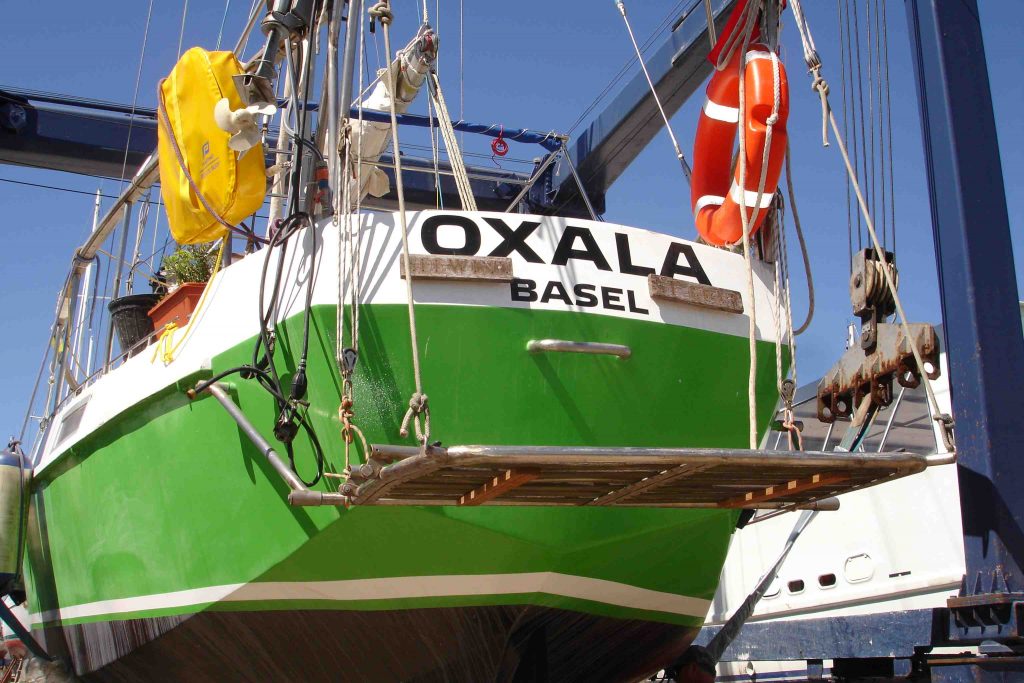
Might this one belong to a scaffolder?
Platforms should be modular in design so that they can be repaired/removed/replaced easily even far from home. A bespoke one-piece platform might look better, but will put a big dent in the budget and could be very difficult to repair on the hoof (not to mention the unnecessary extra weight).
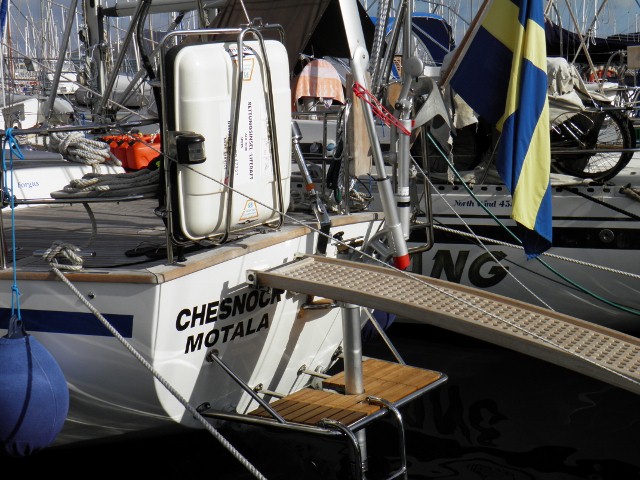
Platform, Windpilot, gangway and swim ladder
Windvane steering systems can coexist happily with bathing platforms of all descriptions – no disillusionment and no painful compromises required! Smart vane gear manufacturers have a solution ready off the shelf (or up their sleeve) for all stern configurations, which is not only very useful up front, but also very handy in the event of damage. I’m not sure there is anything new under the sun in this area either but once again, I would be happy to discuss the subject by e-mail if anyone has any questions!
DAVIDS
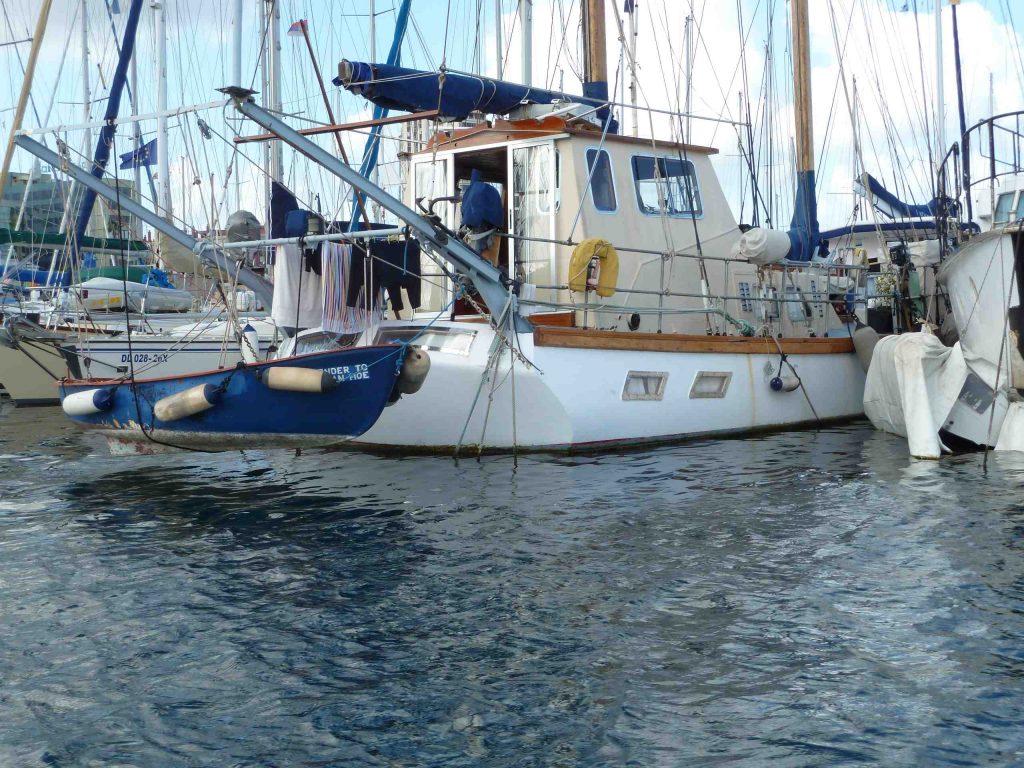
Davits seem to have become a burning must-have for people cruising offshore on anything longer than about 35 feet.
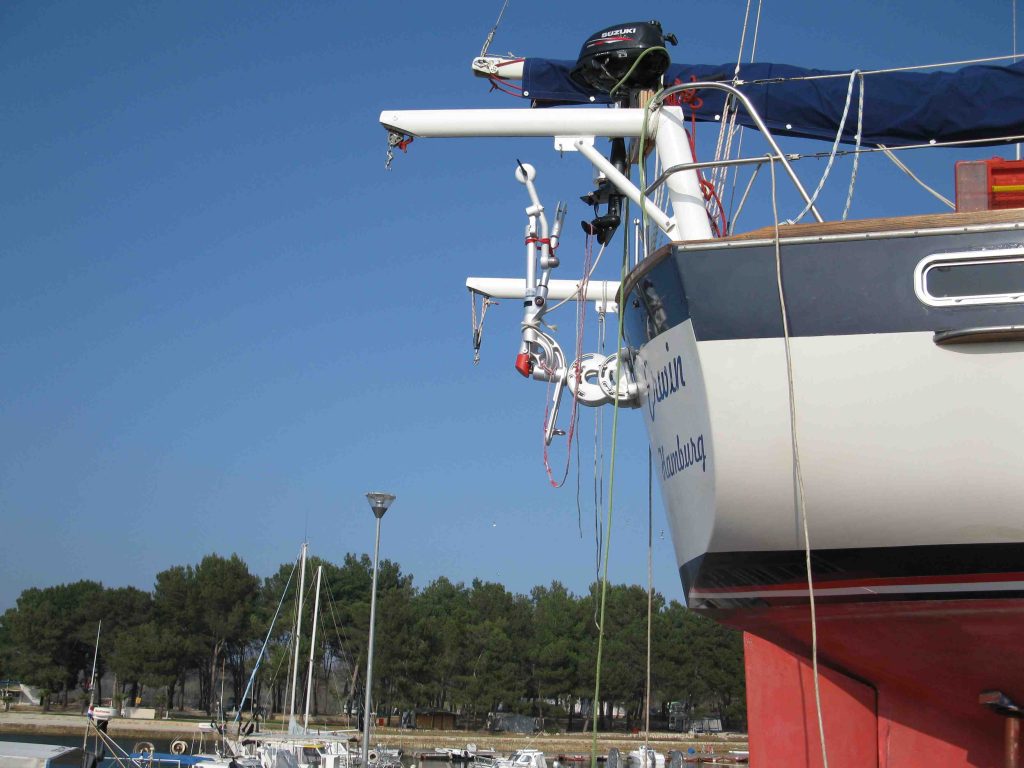
The first matter to clarify in this context is that davits have no business dinghy-dangling at sea other than on the largest of yachts: one unscripted encounter with an overenthusiastic wave and – hasta la vista dinghy (and davits) – you have a blank slate at the back ready for the next crop of gadgets.
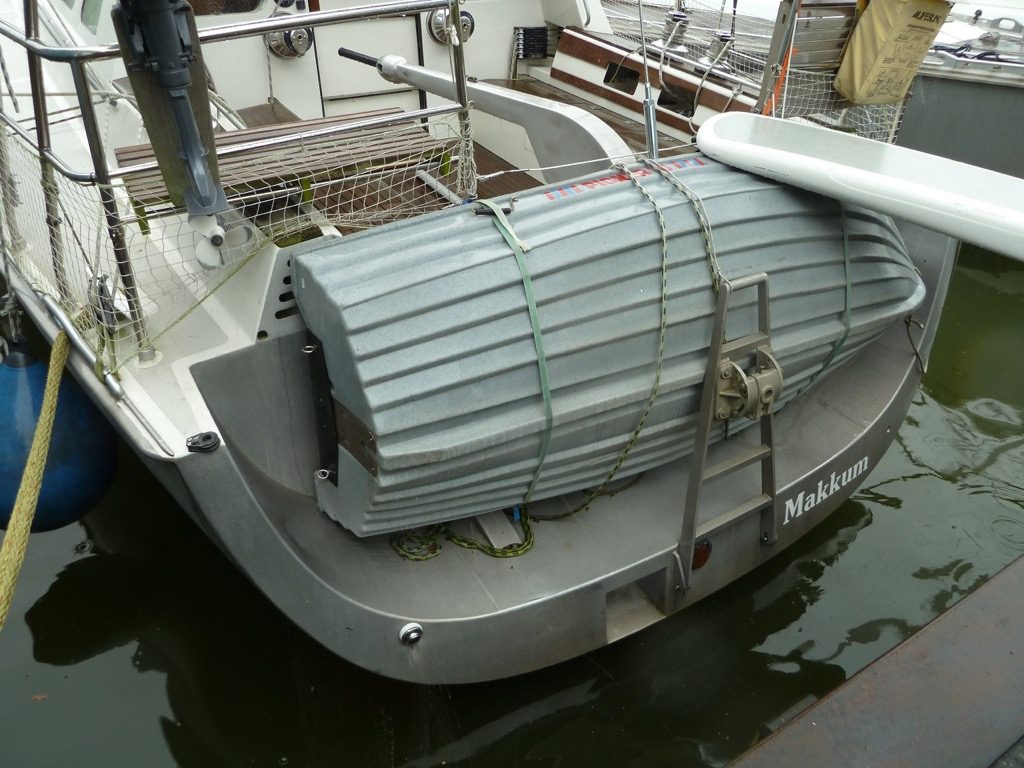
A dinghy is a very big target for incoming waves and can consequently transmit enormous forces to the davits and onwards to the deck. If there is a weak link in the system, be it the davits, the way they are fitted or even the dinghy itself, there is a good chance the sea will find it. The inertia associated with a dinghy should not be overlooked either – truly there is ample opportunity here to get it wrong! Davits are ideal for parking the dinghy overnight or transporting a wet tender during short hops from anchorage to anchorage, but at sea they are best regarded as decorative, or at most a useful place to stick solar panels, wind generators or antenna bases.
DINGHY
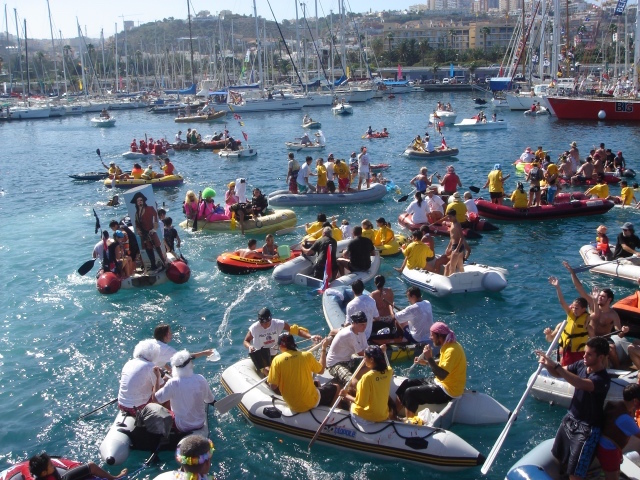
Choosing the right dinghy can be tricky. The first thing to bear in mind is that while they are certainly convenient to stow, compact folding or inflatable tenders with a collapsible/inflatable floor are only suitable for small outboard motors or rowing. They may be fun in a sheltered marina close to home, but unfamiliar waters and exposed coastlines demand something with a bit more to it.
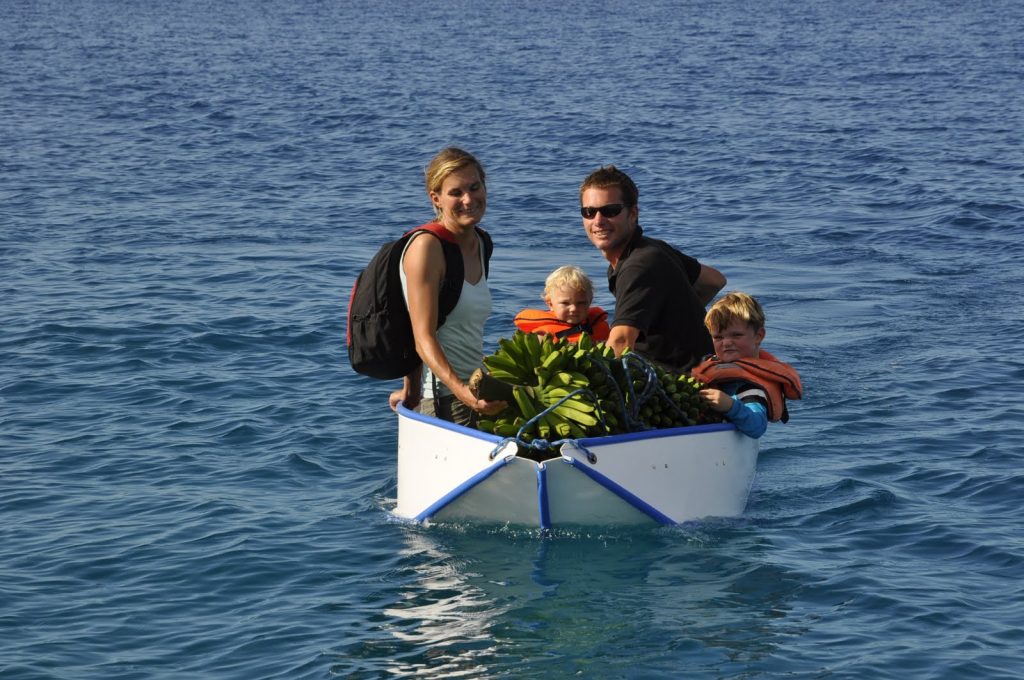
Banana boat: folds up for easy stowage but only suitable for small outboards
Fighting your way back to the mother ship in deteriorating weather in a flimsy tender powered by just a small outboard or your own efforts at the oars can be an ordeal. Every crest knocks you off course and the advantages of something more robust suddenly become very clear. A RIB equipped with a small motor, for example, is stiff enough to plane even in rough water, making travel under adverse conditions much less of an adventure.
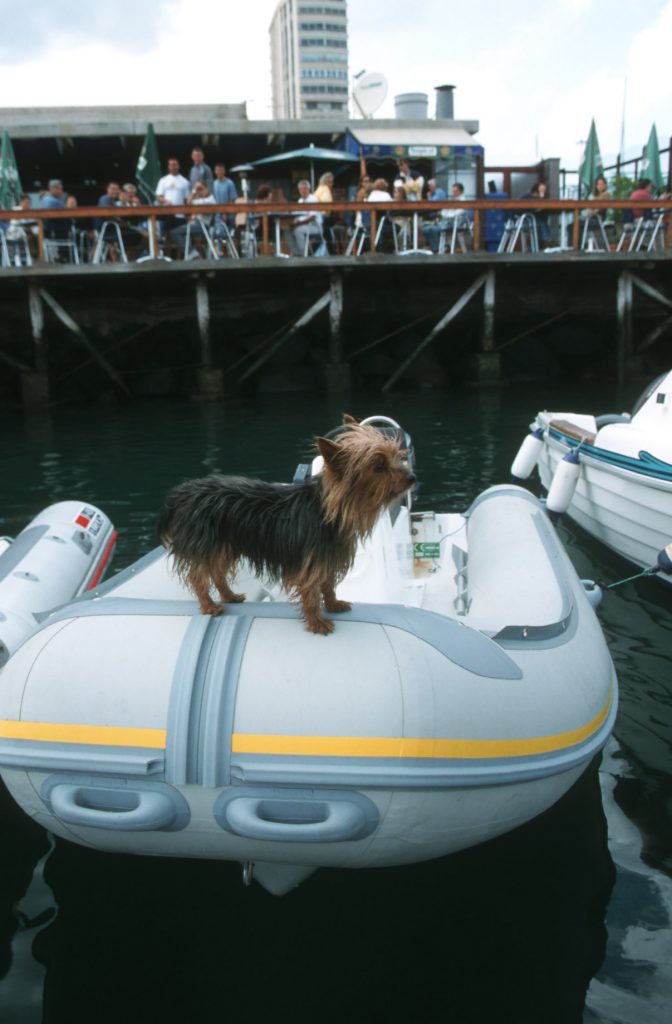
RIBs, which also have advantages in terms of safety and lend themselves to towing (at any reasonable kind of boat speed), are the standard solution across the anchorages of the world.
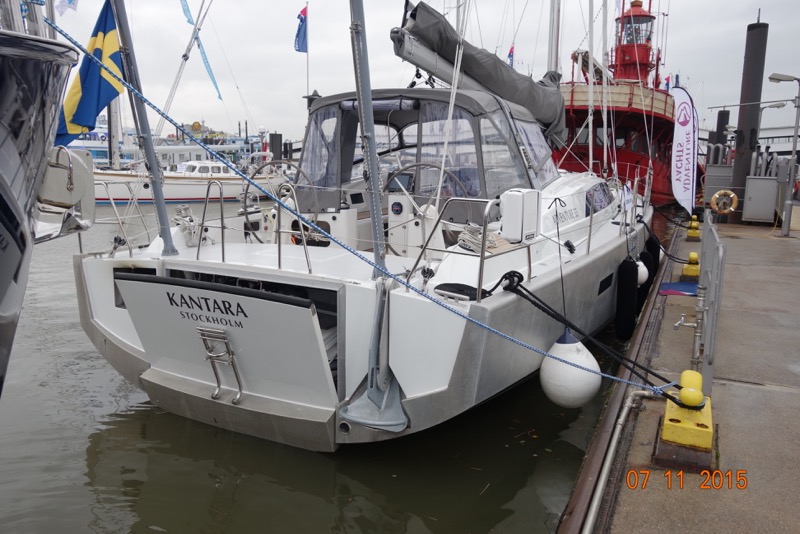
As an aside, it makes sense not to buy your tender until you actually need it.CARIBE Ribs ribs, which are manufactured in Venezuela using Hypalon, have a good reputation for robustness and affordability and can be had for a good price throughout the Caribbean. There is a lively second-hand market within the sailing community too, which is worth considering not least because a pre-loved dinghy is less likely to be stolen.
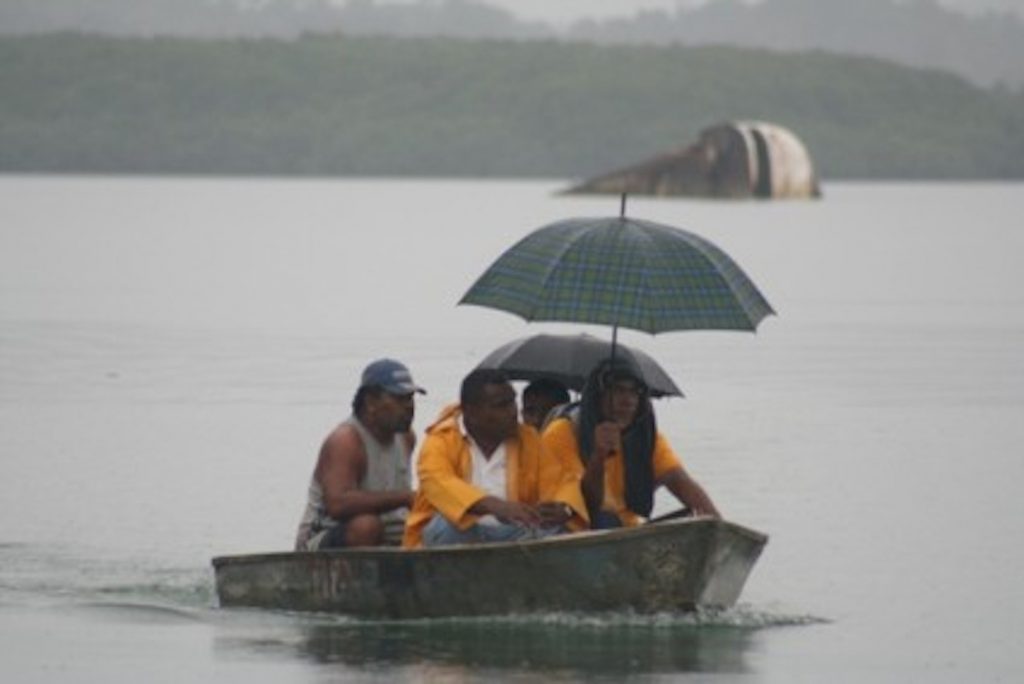
Note that where theft is an issue, a dinghy that spends the night out of the water – whether in davits or on the main halyard – is much more likely still to be there at breakfast time. What the voyaging yacht owner often regards as no more than a useful accessory can represent a significant catch for a light-fingered local in many parts of the world and the trick of disguising a brand-new tender and outboard with an old tarpaulin over the tubes and a splash of paint on the engine cover is universally known – including among those none-too-rare jokers who will politely guard your boat all day only to relieve you of it after dark.
OUTBOARD MOTORS
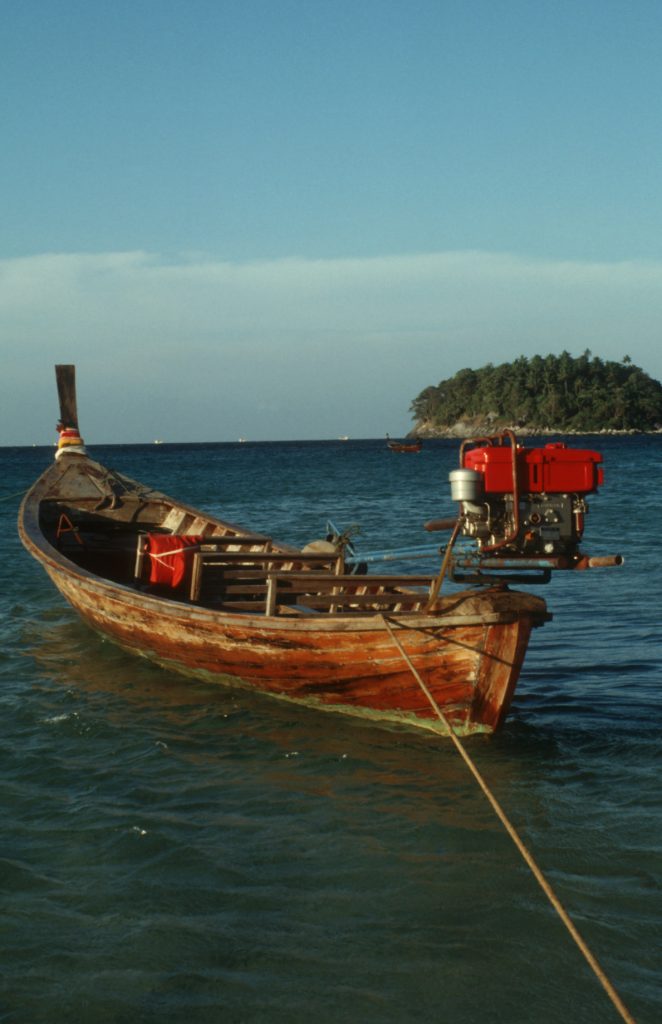
As I have already alluded to, if horsepower didn’t matter we could all just manage with a whisk from the galley. But horsepower does matter: a RIB will plane with an 8 HP outboard. Outboards are best stored below deck rather than on the stern rail when not in use, as the aluminium alloy used tends not to be seawater resistant and its paint job is thus the engine’s only protection against corrosion. An engine left on display, moreover, can make a tempting target for anyone intent of acquiring one for free.
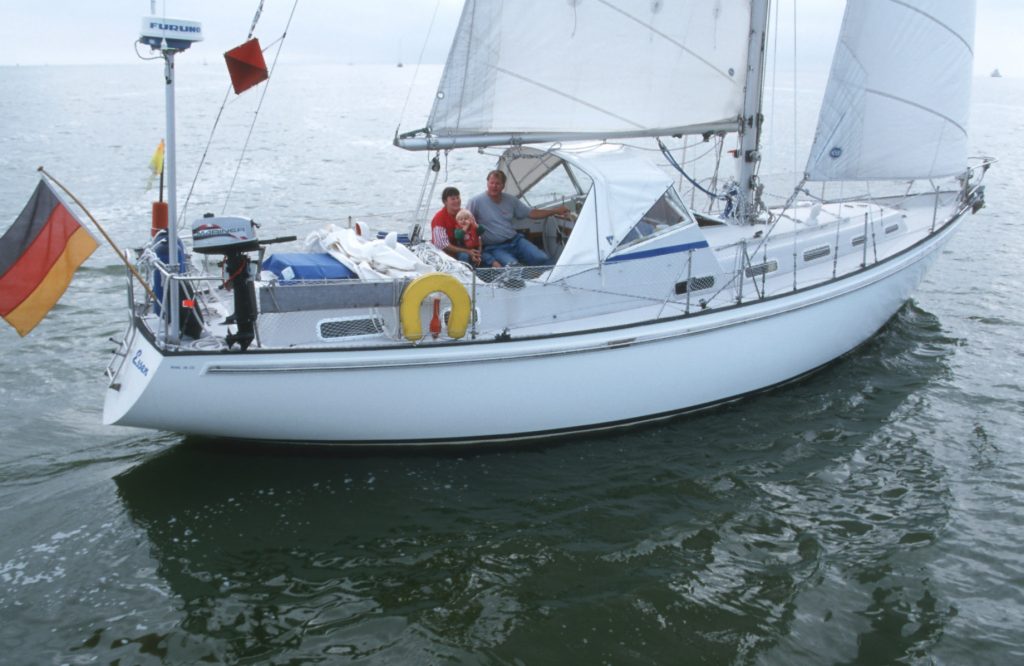
Rival 38 with outboard mounted on the stern rail
I know that some people object to more powerful outboards because of the disturbance their noise and wake cause for other boats anchored nearby, but on the other hand faster-moving dinghies are gone sooner – and then there is the added safety factor that comes with a more powerful outboard to consider too.
A WORLD OF ANTENNAS
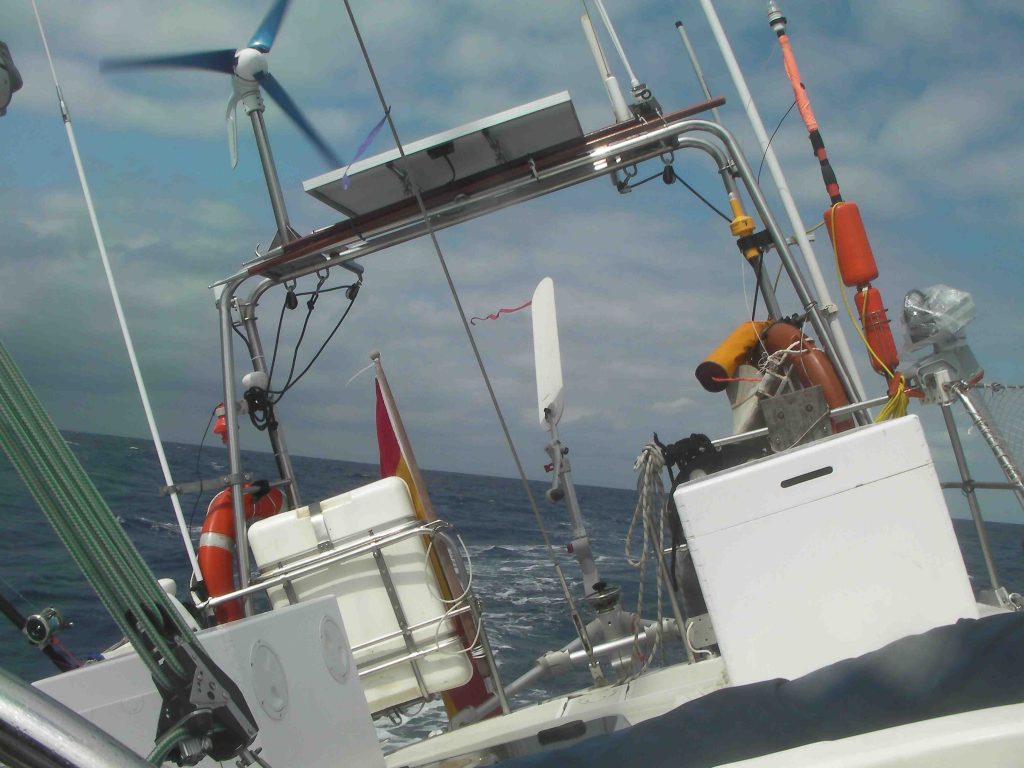
A forest of antennas (ten is an entirely realistic number now for a well-equipped vessel) is one of the prices to be paid for 21st century safety and convenience at sea. The preferred mounting locations are
– top of the mast
– leading edge of the mast
– at the stern on the backstay
– at the stern on deck
– at the stern on the stern rail
– at the stern on an antenna arch
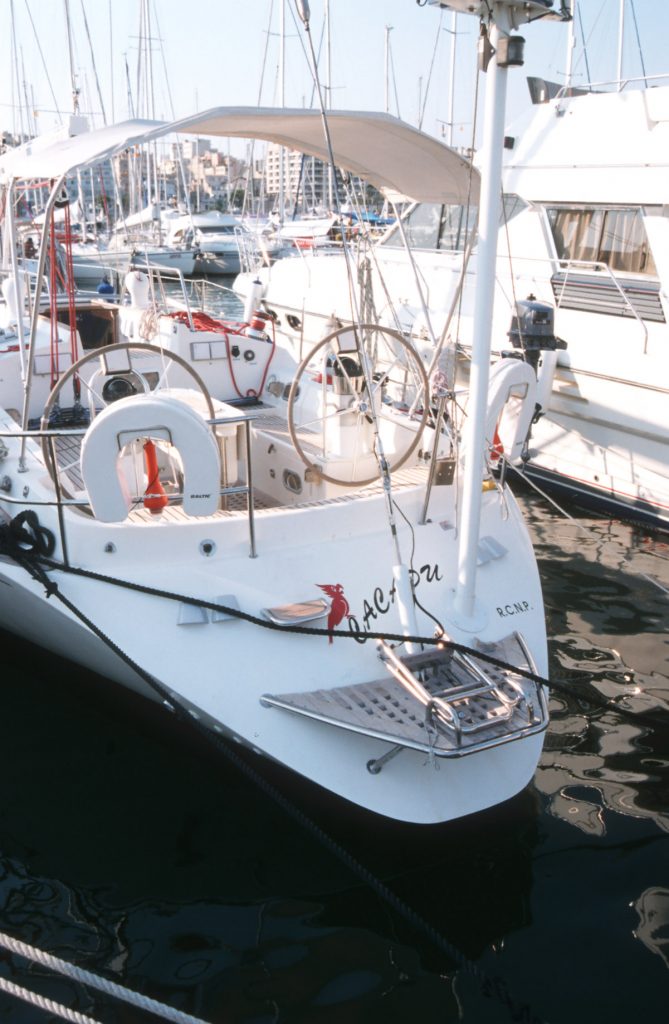
A radar pole on a GRP hull attached just to the transom
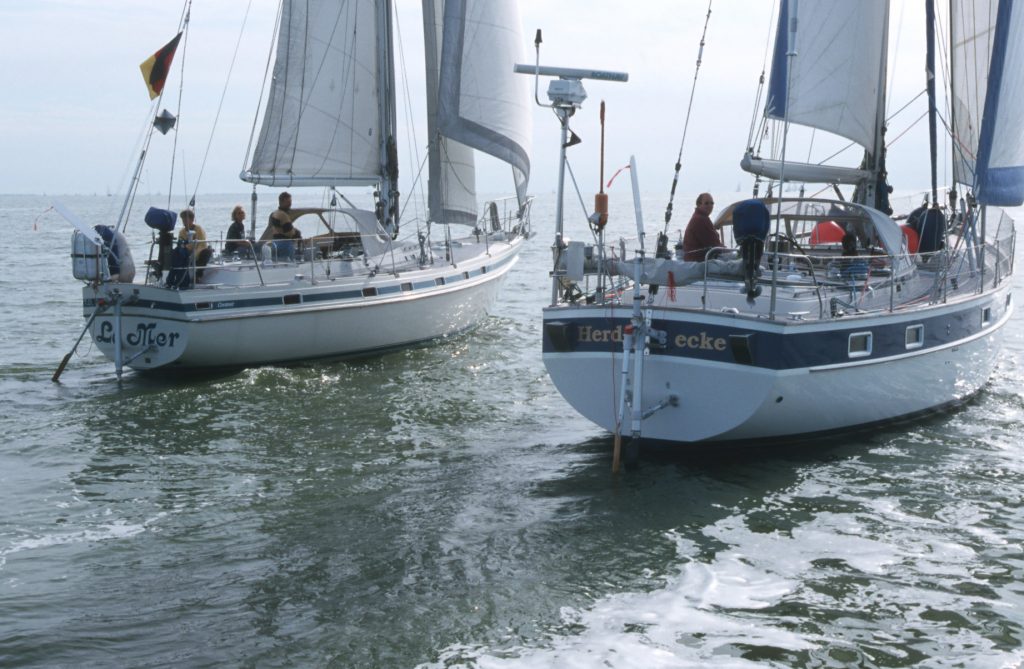
Radar pole on an HR 45 with tubular struts for fore/aft and lateral support
Required/desired range is the key factor in determining what ends up where and the limited amount of space left at the mast head once the wind instruments have claimed their spot is consequently usually given over to radio communication systems. The radome does not need to be mounted so high up off the deck as it will not generate a meaningful echo from a far horizon in any case. The four main options are the leading edge of the mast, at the stern on a pole, at the stern on a framework of stainless steel tubes and at the stern on an antenna arch. Height above water is irrelevant for satellite antennas as the signal comes from above.
WIND GENERATOR AND SOLAR PANELS
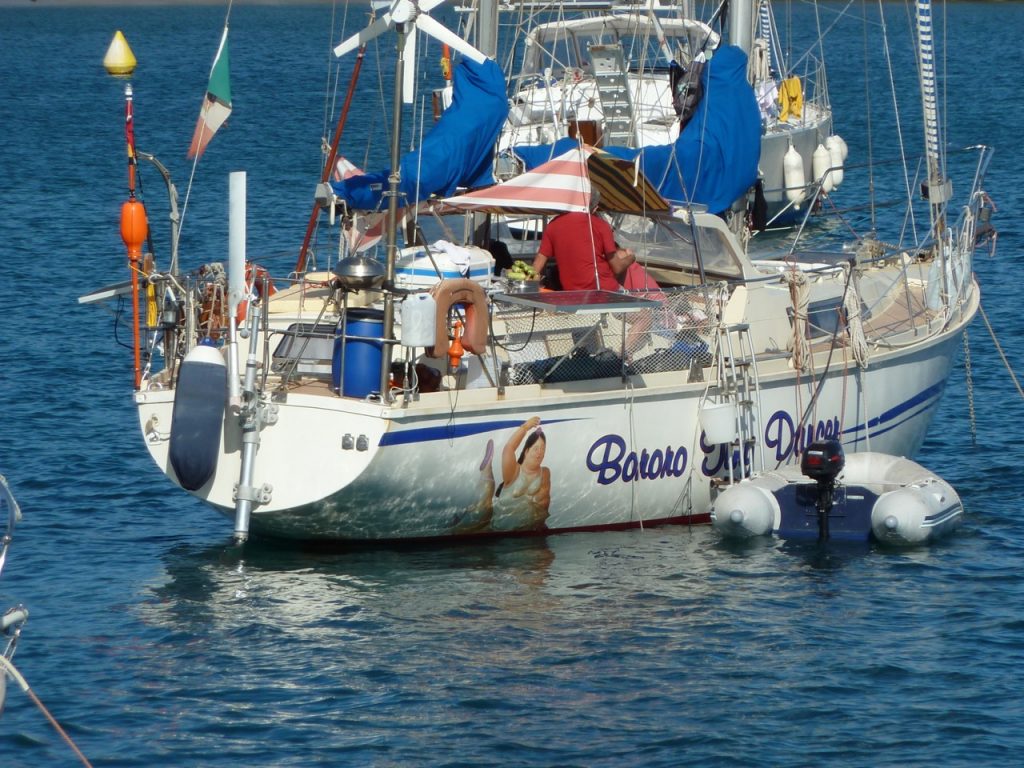
Proper location is essential for wind generators and solar panels: the former need a good airflow and enough space to spin without mincing the crew and the latter need plenty of light. Solar panels can be installed in many different locations or even moved around for best effect.
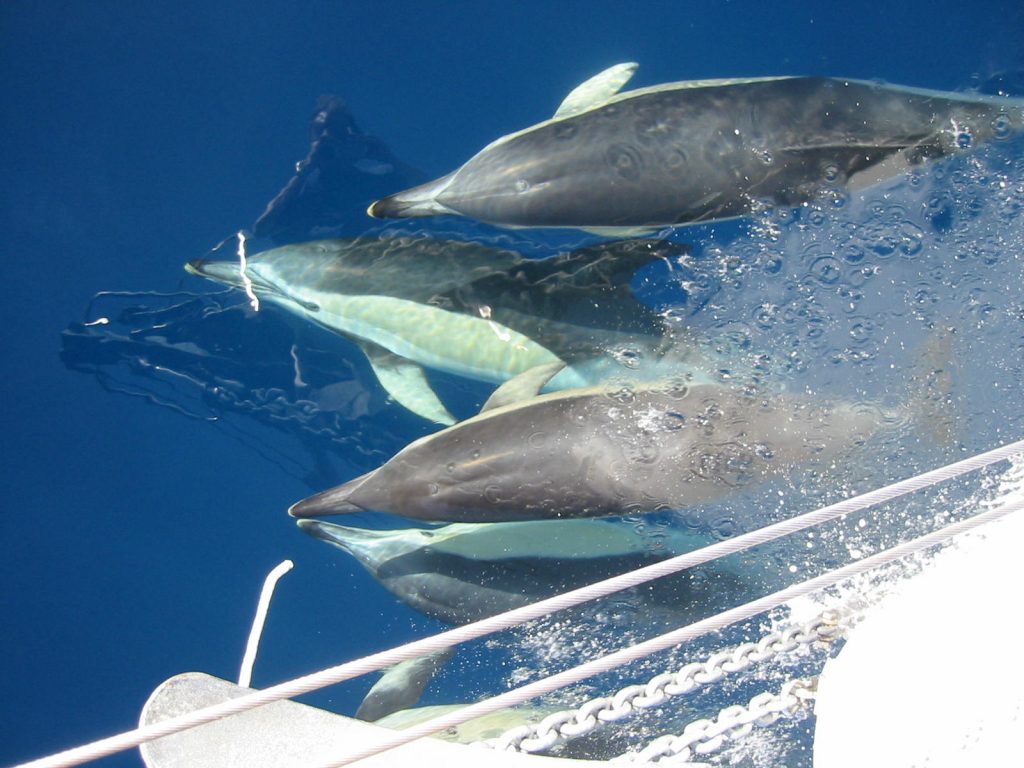
This is the point at which the idea of an antenna arch should begin to seem really rather attractive even to those who were initially reluctant. An antenna arch combines practicality and safety, can perform multiple roles and has the potential to look good doing so too. I believe antenna arches are the way to go and I consequently discuss them in detail in part 2 of this blog, which also looks at biminis, life rafts, and hydro generators.
Tune in, read on, cast off, suggests
Peter Foerthmann
































